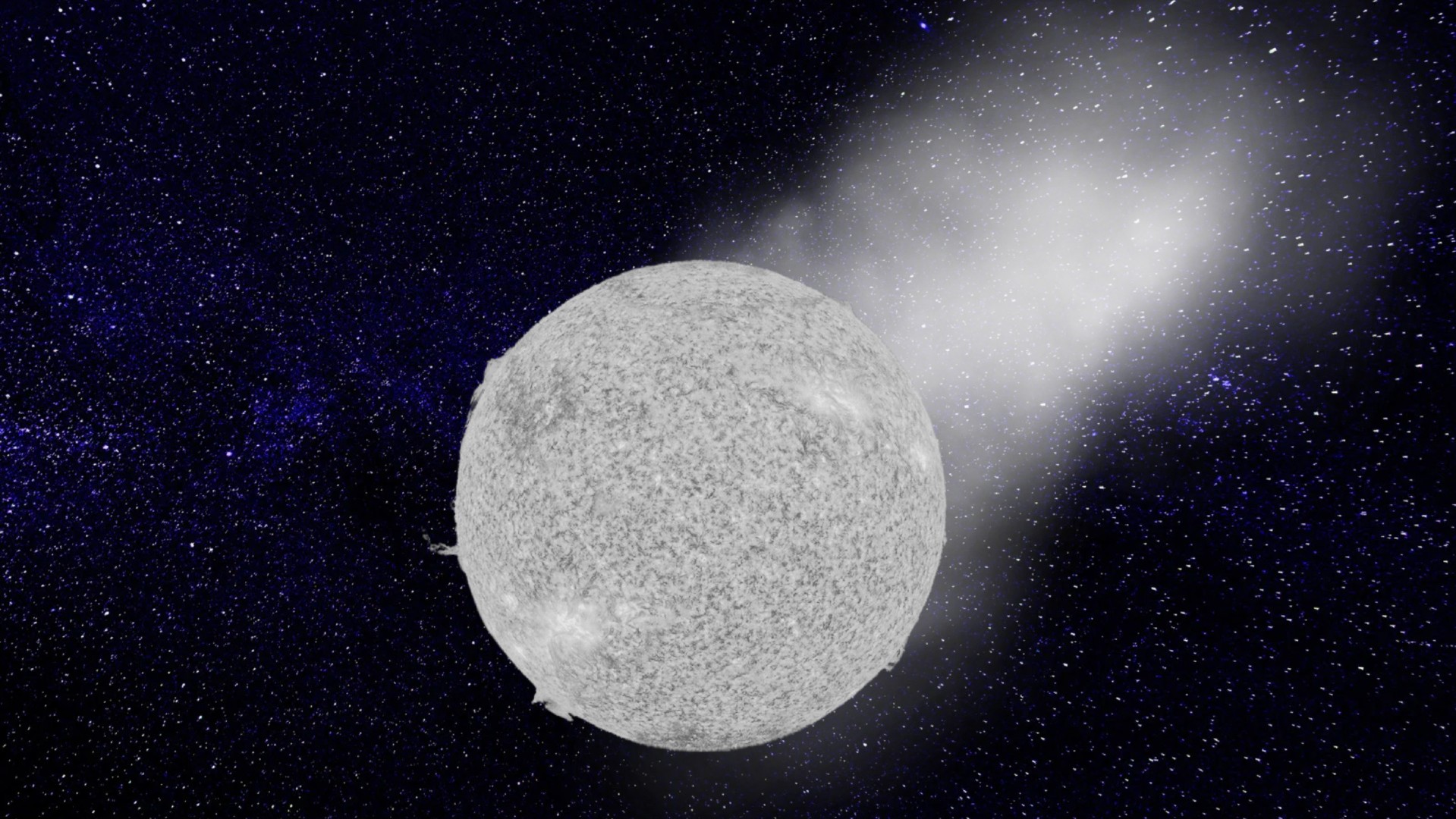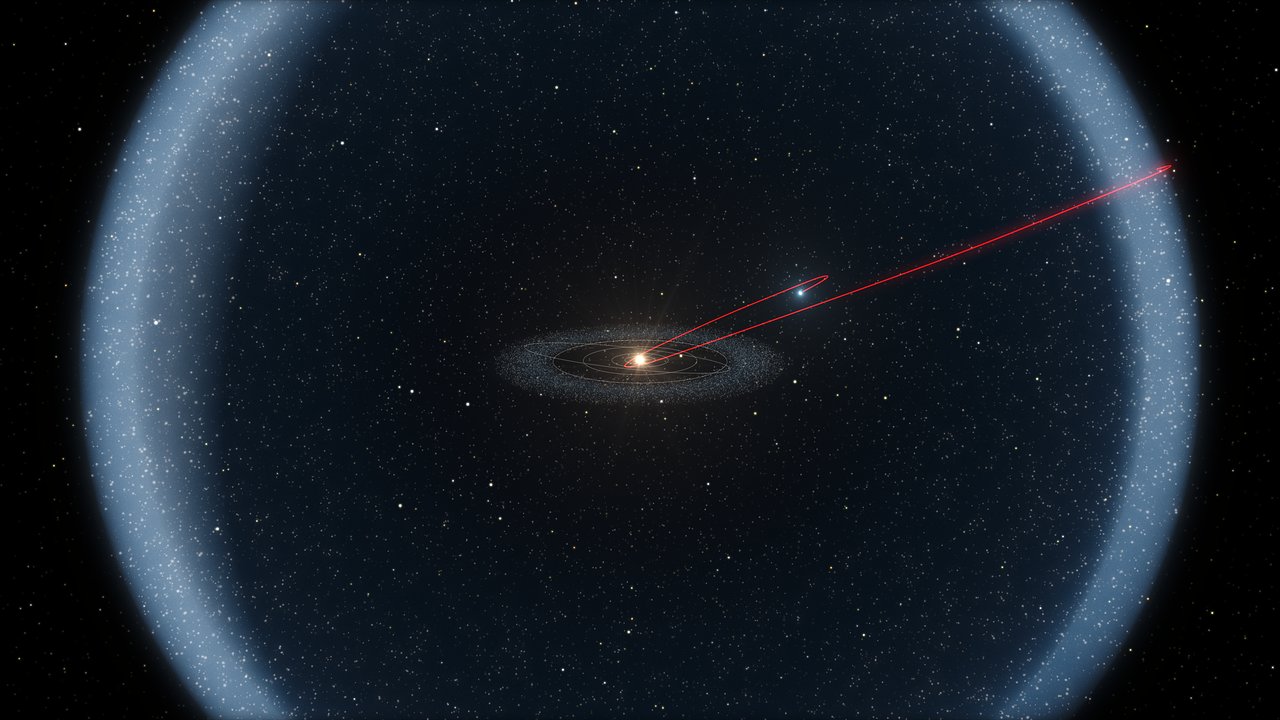'Rogue' star won't collide with our solar system in 29,000 years after all
"That's one less cosmic hazard we have to worry about!"

The solar system of the far future is safe from a run-in with a runaway dead star.
Last year, researchers looked at the trajectory of a rogue white dwarf star called WD 0810–353 with the Gaia space telescope and predicted that it was due for an encounter with our solar system in around 29,000 years. While this may seem a long time in human terms, it is a relatively short period cosmically speaking. For instance, the sun won't run out of hydrogen and swell out as a red giant for another 5 billion years, destroying Earth and the inner planets in the process.
While the sun's fate is likely sealed, new research has revealed that our planet at least won't have to worry about being decimated by the chaos caused by runaway white dwarf WD 0810–353 after all. In fact, the "rogue" star won't just miss the solar system; it might not even be headed our way at all, astronomers say.
"We found that the approach speed measured by the Gaia project is incorrect, and the close encounter predicted between WD0810–353 and the sun is actually not going to happen," astronomer Stefano Bagnulo said in a statement. "In fact, WD0810–353 may not even be moving towards the sun at all. That's one less cosmic hazard we have to worry about!"
Related: Fast-spinning white dwarf pulsar, the 2nd we've ever discovered, sheds light on how stars evolve
What did Gaia get wrong?
Gaia is a space telescope that is currently building an extraordinarily precise three-dimensional map of more than a billion stars throughout our Milky Way galaxy. It does this by precisely measuring the positions of stars and tracking changes in these positions by returning this "slice" of the sky and observing it again to see what has changed.
In 2022, astronomers Vadim Bobylev and Anisa Bajkova analyzed the vast Gaia dataset, searching for stars that appear to be heading toward the solar system. This led them to WD 0810–353, a white dwarf star — a type of dense stellar remnant left behind when stars with masses similar to the sun die.
Get the Space.com Newsletter
Breaking space news, the latest updates on rocket launches, skywatching events and more!
Our own sun will become a white dwarf about a billion years after its destructive red giant spell when the swelled outer layers of the sun will cool and move away, leaving behind a smoldering core.
WD 0810–353 might offer a preview of what the sun will look like at that time when it comes to within around half a light-year of the solar system, about 31,000 times the distance between Earth and the sun.
While this seems like anything but a close encounter, it is close enough that the gravitational influence of WD 0810–353 could disturb the Oort cloud — a body of comets and other icy bodies at the edge of the solar system.
The Oort cloud is located between 2,000 and 100,000 times the distance between Earth and the sun from the solar system's central star. When the cloud gets shuffled by passing stars like WD 0810–353, the star's gravity could send some of these loosely gravitationally bound icy bodies plummeting toward the inner solar system and Earth.
So, what happened with the observations of this rogue white dwarf? What made astronomers think it was heading our way, and how do we know it probably isn't?

A magnetic mix-up
When making its observations of WD 0810–353, it turns out Gia missed something important and unusual about this white dwarf. It has a strangely large magnetic field.
"Unusually, this old white dwarf also has a huge magnetic field," explains Eva Villaver, an astronomer at the Astrobiology Center in Spain and co-author of the study. "In astronomy, magnetic fields are crucial to understanding many physical aspects of a star, and not considering them can lead to misinterpretations of physical phenomena."
The astronomers had determined WD 0810–353 was heading toward us by calculating the white dwarf's radial velocity — the velocity of an object along the line of sight from the observer to that object. This is done by looking at the spectrum of light being emitted by the star and then splitting that down into constituent wavelengths that make up that light.
If a star is moving away from us, that stretches out wavelengths, which has the effect of shifting the light down to the red end of the electromagnetic spectrum, a phenomenon known as redshift. If a star is moving toward us, however, the wavelength of light it emits is compressed together and moves toward the blue end and is described as being "blueshifted."
The thing is that magnetic fields can also affect the spectrum of light from a star, dead or not, by splitting spectral lines and shifting lines to other wavelengths.
Crisis averted…
To determine if this was the case with WD 0810–353, Bagnulo turned to the Very Large Telescope (VLT) located in northern Chile, and in particular, an instrument called the FOcal Reducer and low dispersion Spectrograph 2 (FORS2).
FORS2 let the team get a highly accurate picture of the spectra of WD 0810–353 and see if its intense magnetic field was messing with Gaia. This is possible because light waves usually oscillate in all directions, but when introduced to a magnetic field, they start to oscillate in a preferred direction — becoming "polarized."
Using polarized light from this white dwarf, the team modeled the magnetic field of the dead star and found its trajectory and velocity could actually be the result of a strong magnetic field. That means the solar system is likely safe from this particular rogue white dwarf.
The team's research is published in the Astrophysical Journal.
Join our Space Forums to keep talking space on the latest missions, night sky and more! And if you have a news tip, correction or comment, let us know at: community@space.com.

Robert Lea is a science journalist in the U.K. whose articles have been published in Physics World, New Scientist, Astronomy Magazine, All About Space, Newsweek and ZME Science. He also writes about science communication for Elsevier and the European Journal of Physics. Rob holds a bachelor of science degree in physics and astronomy from the U.K.’s Open University. Follow him on Twitter @sciencef1rst.
-
Unclear Engineer The article has the "scrunched" and "stretched" aspects of light wavelength shifting stated backwards.Reply
"If a star is moving away us, that scrunches up wavelengths, which has the effect of shifting the light down to the red end of the electromagnetic spectrum, a phenomenon known as redshift. If a star is moving toward us, however, the wavelength of light it emits is stretched and moves toward the blue end and is described as being 'blueshifted."' -
Helio Yep, surprising that wasn't caught.Reply
But, using the original radial velocity, it would be arriving in 29 years, as originally claimed, but not come any closer than about 2-1/2 lyrs., not what was claimed.
What may have gotten notice was that the original velocity was stated as -373.74 kps (Wiki still shows this). But this is about 10x any normal speed, so a real speedster.
The new result (paper here) changes it to +83 kps (moving away from us) but the large margin of error is 149 kps, which would allow a chance that it is coming our way.
Assuming the difference, highly unlikely admittedly, then, using -57 kps, it wouldn't get any closer than about 15 lyrs. to us and take 158k years to do so.









